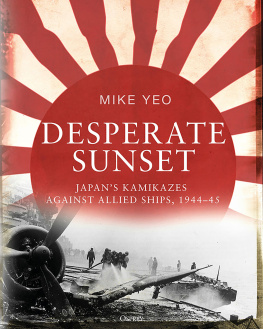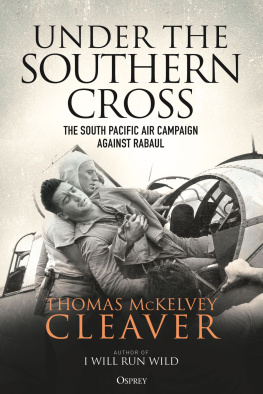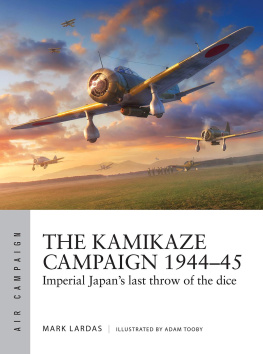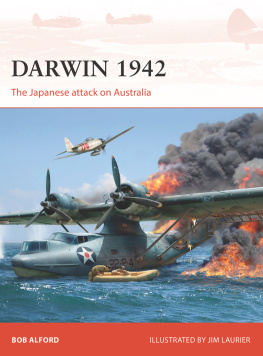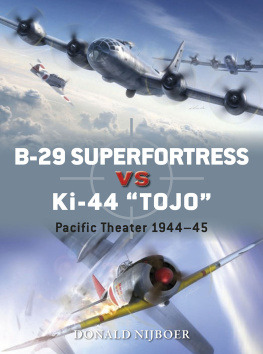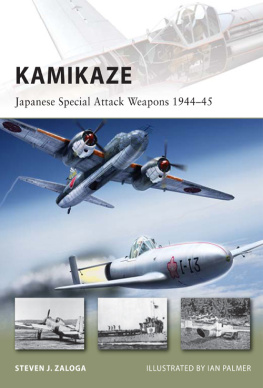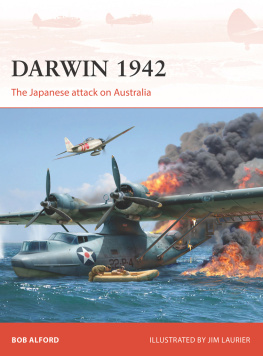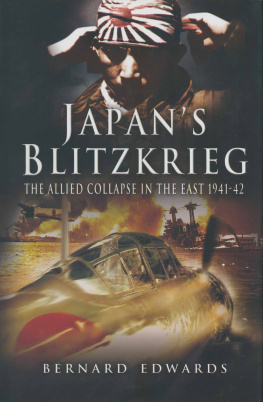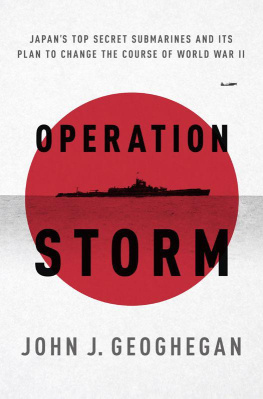By mid-1944, Imperial Japans armed forces found themselves in an increasingly desperate situation. The Imperial Japanese Army Air Force (IJAAF) and Imperial Japanese Naval Air Force (IJNAF) had suffered terrible losses in the grinding aerial battles over the Solomons in 194243, while the Imperial Japanese Navy (IJN) was a shadow of the force that had so successfully attacked Pearl Harbor on December 7, 1941. The battle of the Philippine Sea on June 1920, better known to high-scoring US Navy fighter pilots in the immediate aftermath of the campaign as the Marianas Turkey Shoot, effectively sounded the death knell for the IJNAF. An attempt to forestall the US amphibious invasion of the Mariana Islands had seen the IJNAF wiped out as a fighting force, losing between 550 and 650 aircraft (estimates vary), along with most of what remained of its cadre of combat-experienced pilots. Little damage had been inflicted on the US Navys Pacific Fleet in return.
Among the hundreds of pilots lost during this one-sided battle was Lt Cdr Takashige Egusa, who had led the D3A Val dive-bombers of the second wave attack on Pearl Harbor and had personally bombed the battleship USS Nevada (BB-36). He subsequently hit the cruiser HMS Dorsetshire and the carrier HMS Hermes as the Japanese swept across the Pacific and Southeast Asia. However, by June 1944 off Guam, in the Northern Mariana Islands, it was a vastly different war, and on the 15th of that month Egusa found himself leading a small force of land-based Yokosuka P1Y Frances twin-engined torpedo-bombers against a powerfully defended carrier task force. His entire formation was unceremoniously shot down before they reached their targets.

Acknowledged throughout the IJNAF as its finest dive-bomber leader, Lt Cdr Takashige Egusa led the D3A Val dive-bombers of the second wave during the attack on Pearl Harbor on the morning of December 7, 1941, and also presided over the sinking of British cruisers HMS Cornwall and HMS Dorsetshire in the Indian Ocean in April 1942. He fell in battle on June 15, 1944 leading a small force of land-based P1Y1 Frances bombers of the 521st Kokutai against a US Navy carrier task force off the Northern Mariana Islands. (Tony Holmes collection)
When he died in combat, Egusa was among the last aircrew survivors from the men who had attacked Pearl Harbor two-and-a-half years earlier. The ranks of this once elite force had been drastically thinned during the carrier clashes in the battles of the Coral Sea and Midway and then utterly decimated in the war of attrition that followed in the Solomons. As an example, the tactical victory won by the IJN at the battle of Santa Cruz on October 26, 1942 its carrier-based aircraft sank USS Hornet (CV-8) and badly damaged USS Enterprise (CV-6) in exchange for two Japanese carriers being heavily damaged came at a horrific cost in aircrew. No fewer than 148 pilots and observers/gunners, including two dive-bomber group leaders, three torpedo-bomber squadron leaders, and 18 section or flight leaders were lost, together with 99 of the 203 aircraft committed by the IJNAF to the battle.
Things were little better for land-based units of the IJAAF either, as they too had endured heavy attrition in New Guinea and the Solomons in 194243 in a forlorn attempt to wrest aerial supremacy back from increasingly powerful Allied air forces in-theater following initial successes in the early days of the Japanese campaign in Southeast Asia and the western Pacific.
In spite of such reversals in fortune, both the IJNAF and the IJAAF had one last desperate, and deadly, card to play. By October 1944 senior naval officers were openly discussing forming Tokubetsu Kogekitai (shortened to tokko-tai) units to fly serviceable, bomb-laden aircraft and crash them into enemy ships. Faced with a severe lack of skilled, experienced airmen able to accurately bomb or torpedo Allied vessels using conventional methods, Vice Admiral Takijiro Onishi (soon to be appointed commander of 1st Air Fleet in the Philippines) requested approval from the Chief of the Naval General Staff to form a Special Attack unit to carry out suicide strikes on the US Navys Pacific Fleet.
Although initially opposed to the idea of such attacks when first briefed on them, Onishi had quickly realized that conventional attacks had little chance of success against the overwhelming firepower of the US forces being massed for the imminent invasion of the Philippines. It was duly decided the best way to inflict maximum damage on the enemy forces approaching Japan was to get the poorly trained IJNAF and IJAAF pilots to crash their aircraft into their targets, thus essentially becoming guided bombs.
The use of tai-tari (body-crashing) tactics was not a new phenomenon, with Japanese pilots whose aircraft were badly hit being known to have attempted to crash into Allied ships as early as May 1942. However, these were individual actions taken by pilots who decided that there was no way their badly damaged aircraft could have returned to base. The formation of Tokubetsu Kogekitai and the employment of Special Attack tactics would be a different thing altogether, for it would entail pilots setting out specifically to crash their aircraft onto enemy ships, with no intention of returning home.
That the Japanese should turn to such tactics out of desperation should not have come as a great surprise to the Allies. Indeed, there had been numerous occasions throughout the Pacific War when Japanese pilots facing an imminent crash in a stricken aircraft had opted to adopt jibaku (Japanese term for the act of suicide) tactics and attempted to strike an enemy vessel, with varying degrees of success.
In February 1942, following the fall of Rabaul, on the South Pacific island of New Britain, to Japanese forces, the Allies were concerned that the IJN would turn it into a major base that could pose a threat to the vital CaliforniaAustralia sea lane supply route. A raid was quickly planned against Rabaul, with the US Navys Task Force (TF) 11, centered on the aircraft carrier USS Lexington (CV-2), ordered to carry out the attack scheduled for February 21. TF 11 was detected by a patrolling IJNAF flying boat on the morning of the 20th, with Rabaul still out of range, and the decision was made to call off the raid soon after. However, by then, the IJNAF had already sortied 17 G4M1 Betty bombers of the newly arrived 4th Kokutai from Rabauls Vunakanau airfield to attack the ships.

